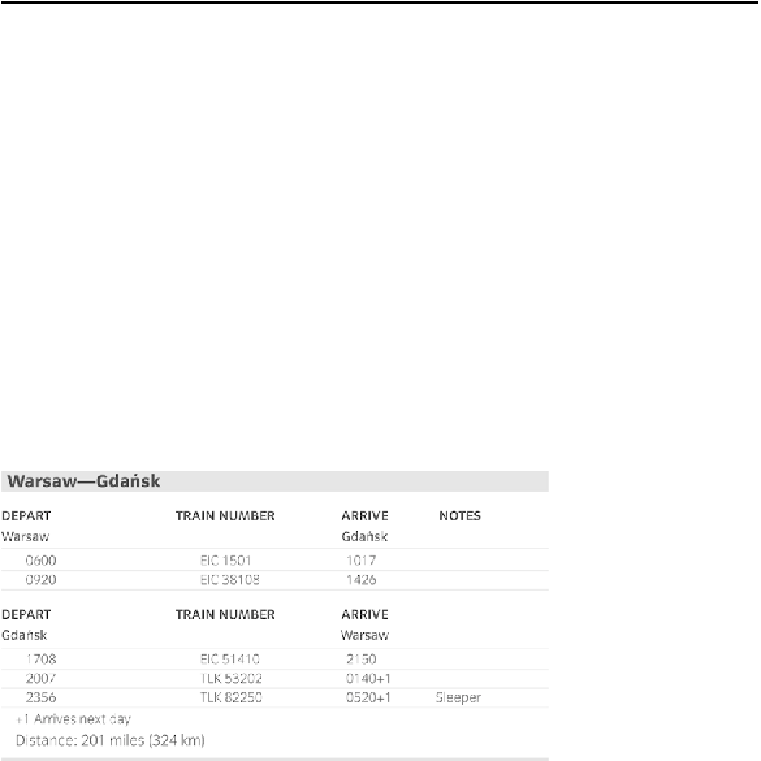Travel Reference
In-Depth Information
munism in eastern Europe. Gdańsk is home to a diversified industrial and educa-
tional base, and Sopot is a popular beach area for many northern Europeans.
Gdańsk operates a unique system of audio tour guides. Available for rental at
the tourist offices, the small devices contain various facts and histories of historical
sites around the area. The information begins playing automatically as you reach
the site, and can be paused and continued at your own speed. The devices can be
rented for as little as 12 zł, include a map, and are an excellent way to tour the city
at your own speed.
Just a few blocks from the train station will find you near the
Dlugi Targ (Long
Market)
area, a historical market area in the center of old Gdańsk. The wide open
plaza contains many shops and restaurants, as well as historical buildings from as
far back as the 16th century, although many were damaged during World War II
and had to be reconstructed. Of particular interest is
Artus Court,
originally built
as a meeting place for aristocrats and traders. It has been restored to look much
as it did in the late 1700s, when it was used as a stock exchange, as well as a re-
ception center for important visitors and concert hall. It is now a part of the Gdańsk
History Museum. Visit
www.mhmg.gda.pl
.
If you are interested in military history, consider taking a bus or taxi to
Wester-
platte.
This peninsula was the site of the opening of hostilities in World War II, as
a German battleship moored close by on a “courtesy visit” to the harbor opened
fire on the Polish garrison. German troops then attempted to take the strong point,
held by fewer than 240 Polish soliders. While massively outnumbered, these men
held out for over a week, in a siege that is still recognized as a source of pride and
strength of the country.

Search WWH ::

Custom Search